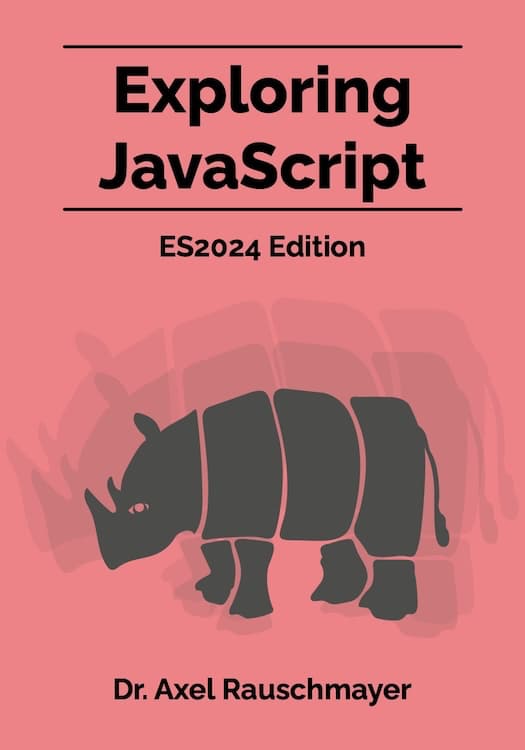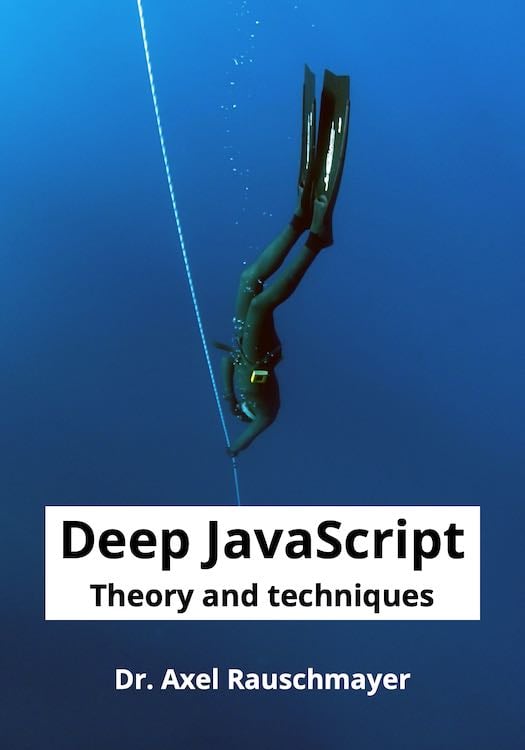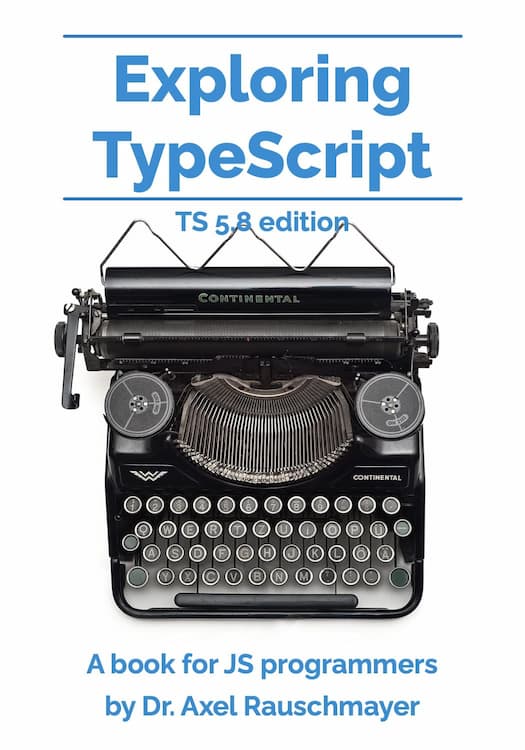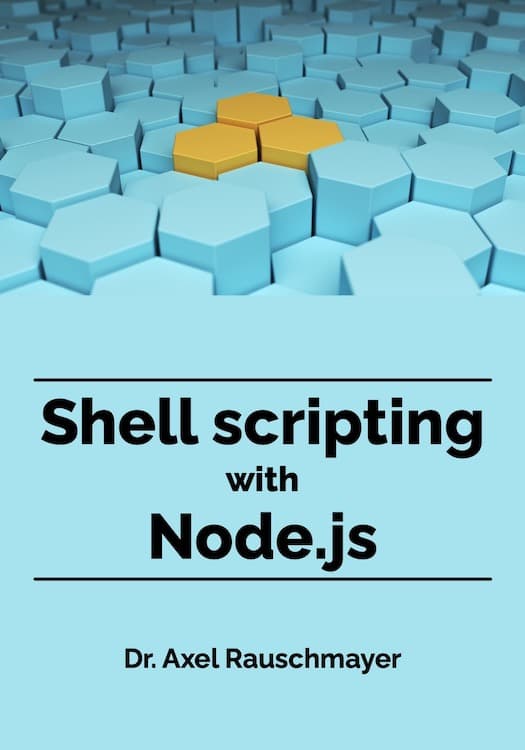ECMAScript 2025 feature: Set methods
In this blog post, we examine the ECMAScript proposal “Set methods for JavaScript” by Michał Wadas, Sathya Gunasekara and Kevin Gibbons. It introduces new methods for Sets.
New Set methods that return Sets
Set.prototype.union(other)
This method returns a Set that is the union of this and other.
Type signature:
Set<T>.prototype.union(other: SetReadOperations<T>): Set<T>
The type of other, SetReadOperations is discussed later. It means that other provides all operations that the new methods need for their algorithms.
Example:
assert.deepEqual(
new Set(['a', 'b', 'c']).union(new Set(['c', 'd'])),
new Set(['a', 'b', 'c', 'd'])
);
Set.prototype.intersection(other)
This method returns a Set that is the intersection of this and other.
Type signature:
Set<T>.prototype.intersection(other: SetReadOperations<T>): Set<T>
Example:
assert.deepEqual(
new Set(['a', 'b', 'c']).intersection(new Set(['c', 'd'])),
new Set(['c'])
);
Set.prototype.difference(other)
This method returns a Set that is the difference between this and other.
Type signature:
Set<T>.prototype.difference(other: SetReadOperations<T>): Set<T>
Example:
assert.deepEqual(
new Set(['a', 'b', 'c']).difference(new Set(['c', 'd'])),
new Set(['a', 'b'])
);
Set.prototype.symmetricDifference(other)
This method returns a Set that is the symmetric difference between this and other. What does that mean? These are equivalent definitions of the symmetric difference:
- (
this−other) ∪ (other−this) - (
this∪other) − (this∩other) thisxorother(exclusive OR)- All elements that only exist in one of the two sets
Type signature:
Set<T>.prototype.symmetricDifference(other: SetReadOperations<T>): Set<T>
Example:
assert.deepEqual(
new Set(['a', 'b', 'c']).symmetricDifference(new Set(['c', 'd'])),
new Set(['a', 'b', 'd'])
);
assert.deepEqual(
new Set(['a', 'b']).symmetricDifference(new Set(['c', 'd'])),
new Set(['a', 'c', 'b', 'd'])
);
New Set methods that return booleans
Set.prototype.isSubsetOf(other)
This method returns true if this is a subset of other and false otherwise.
Type signature:
Set<T>.prototype.isSubsetOf(other: SetReadOperations<T>): boolean
Example:
assert.deepEqual(
new Set(['a', 'b', 'c']).isSubsetOf(new Set(['a', 'b'])),
false
);
assert.deepEqual(
new Set(['a', 'b']).isSubsetOf(new Set(['a', 'b', 'c'])),
true
);
Set.prototype.isSupersetOf(other)
This method returns true if this is a superset of other and false otherwise.
Type signature:
Set<T>.prototype.isSupersetOf(other: SetReadOperations<T>): boolean
Example:
assert.deepEqual(
new Set(['a', 'b', 'c']).isSupersetOf(new Set(['a', 'b'])),
true
);
assert.deepEqual(
new Set(['a', 'b']).isSupersetOf(new Set(['a', 'b', 'c'])),
false
);
Set.prototype.isDisjointFrom(other)
This method returns true if this is disjoint from other and false otherwise.
Type signature:
Set<T>.prototype.isDisjointFrom(other: SetReadOperations<T>): boolean
Example:
assert.deepEqual(
new Set(['a', 'b', 'c']).isDisjointFrom(new Set(['c', 'd'])),
false
);
assert.deepEqual(
new Set(['a', 'b', 'c']).isDisjointFrom(new Set(['x'])),
true
);
Rules for this and other
For all of the new Set methods:
thismust be an instance ofSet.othermust implement the interfaceSetReadOperationsshown below.- The full interface is always enforced, even if a method doesn’t use all of its methods.
interface SetReadOperations<T> {
/** Can be `Infinity` (see next section). */
size: number;
has(key: T): boolean;
/** Returns an iterator for the elements in `this`. */
keys(): Iterator<T>; // only method `.next()` is required
}
Infinite Set-like data
The .size of other can be Infinity. That means we can work with infinite Sets:
const evenNumbers = {
has(elem) {
return (elem % 2) === 0;
},
size: Infinity,
keys() {
throw new TypeError();
}
};
assert.deepEqual(
new Set([0, 1, 2, 3]).difference(evenNumbers),
new Set([1, 3])
);
assert.deepEqual(
new Set([0, 1, 2, 3]).intersection(evenNumbers),
new Set([0, 2])
);
Only two methods don’t support other being an infinite Set:
unionsymmetricDifference
The rationales behind the API design
These are the rationales behind the API design (source):
-
Why does
thishave to be aSet?- TC39 could have chosen a more flexible interface for
thiswhich would have enabled us to use the Set methods generically. However, not doing so makes implementations simpler and faster.
- TC39 could have chosen a more flexible interface for
-
Why use an interface for
other?- Due to the interface,
othercan be a data structure other than a Set. It was chosen as a compromise between accepting only Sets and any iterable objects.
- Due to the interface,
-
Why is the full interface always enforced for
other?- That makes the API simpler and hides implementation details.
-
Why was the method name
.keys()chosen for iterating over data structure elements?- That’s due to compatibility with the only Set-like data structure currently in the standard library –
Map:- The method key
Symbol.iteratordoesn’t work because that Map method returns key-value pairs. - The method key
'values'doesn’t work because that Map method is not compatible with the Map method.has()(which accepts keys, not values).
- The method key
- That’s due to compatibility with the only Set-like data structure currently in the standard library –
-
Why are the new method names nouns and not verbs like
.add()?- A rough general rule (with exceptions) is that verb methods mutate
this, while noun methods return new data – for example:set.add()andset.keys().
- A rough general rule (with exceptions) is that verb methods mutate
Implementations
I’m aware of the following two polyfills:
Further reading
- Chapter “Sets” in “Exploring JavaScript”





